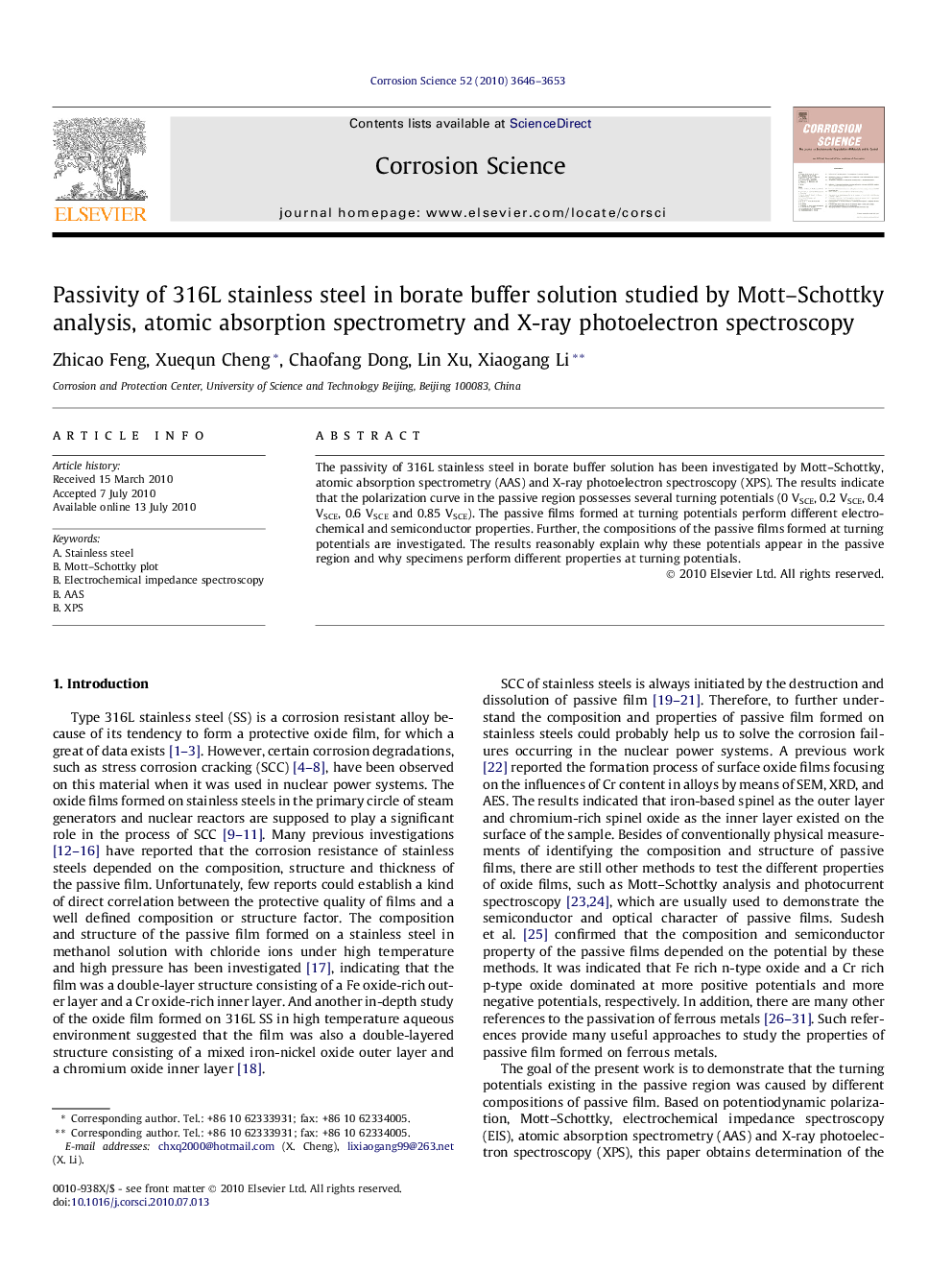| کد مقاله | کد نشریه | سال انتشار | مقاله انگلیسی | نسخه تمام متن |
|---|---|---|---|---|
| 1470084 | 990317 | 2010 | 8 صفحه PDF | دانلود رایگان |

The passivity of 316L stainless steel in borate buffer solution has been investigated by Mott–Schottky, atomic absorption spectrometry (AAS) and X-ray photoelectron spectroscopy (XPS). The results indicate that the polarization curve in the passive region possesses several turning potentials (0 VSCE, 0.2 VSCE, 0.4 VSCE, 0.6 VSCE and 0.85 VSCE). The passive films formed at turning potentials perform different electrochemical and semiconductor properties. Further, the compositions of the passive films formed at turning potentials are investigated. The results reasonably explain why these potentials appear in the passive region and why specimens perform different properties at turning potentials.
Research highlights
► The polarization curve of 316L SS possesses five turning potentials in passive region.
► Films formed at turning potentials perform different electrochemical and semiconductor properties.
► Dissolutions and regenerations of passive film at turning potentials are obtained by AAS and XPS.
► Turning potentials appearing in passive region are ascribed to the changes of the compositions of the passive films.
Journal: Corrosion Science - Volume 52, Issue 11, November 2010, Pages 3646–3653